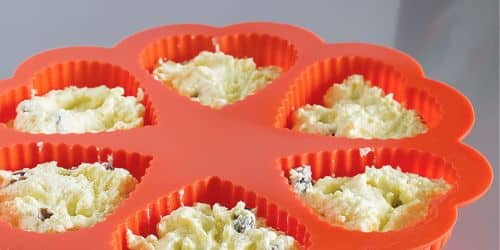When discussing materials used in seal manufacturing, it’s hard to look past silicone seals. This is largely due to the material’s awesome flexibility and high performance under different temperatures and conditions.
Numerous production businesses use silicone seals, including the engineering, food, and medical sectors. The usage of silicone in the food industry is particularly intriguing, given how tightly controlled the sector is. It possesses some characteristics that make it almost perfectly suited to use in an industry with such high purity standards. In this article, we’ll look at some of these characteristics and how they make silicone a favorite in the food industry.
Silicone and the Food Industry

The FDA gives specific requirements for the use of rubbers and polymers in the production of indirect food additives. This code title provides the guidelines, standards, and purity requirements for all items made of rubber and its polymers to be used in food production.
Silicone is one of the few elastomers of rubber that consistently gets the nod for use in food production from the FDA. This is due to its resistance to harmful microorganisms and other impurities, preventing it from reacting with food items it comes into contact with.
The food industry uses silicone for the following reasons:
- Durability: High temperatures do not cause a silicone seal to deteriorate. Manufacturers claim that a silicone seal can endure between 10 and 35 years.
- Adaptability: Silicone can be used to close gaps that are likely to widen or narrow. This will assist in maintaining the device’s appropriate seal in the case of food-serving equipment.
- Resistance: Silicone is resistant to moisture, water, and even potentially dangerous liquids.
- Quick Drying Capabilities: Compared to other materials, silicone seals dry more quickly.
- Strength: Compared to other types of seals, silicone has a stronger adhesion. It possesses a tensile strength of 1015 psi (pounds per square inch).
Additional Characteristics
Temperature resistance is another one of silicone’s key characteristics. This is particularly crucial when processing food because temperatures can range from subfreezing to scorching. Silicone made for food can often withstand temperatures between -80°F and 450°F. Food-grade silicone is still quite flexible at low temperatures, while at higher degrees, food-grade rubber keeps its shape and integrity without being harmed by heat.
And it does not end there. Other characteristics like low chemical reactivity contribute to silicone’s usefulness in the food industry. Apple Rubber’s blog goes in-depth into the different grades of silicone, including food-grade and medical-grade silicone, and the differences between them. Silicone is considered medical-grade when it passes the test for biocompatibility. Medical-grade silicone is used in the production of a wide range of products, including baby bottle nipples, menstrual cups, water pipes, scuba mouthpieces, and other food and skin contact products.
Silicone Seals and Food Safety
The first and most important consideration in the manufacturing or handling of food is to prevent contamination. This narrows down the pool of materials that can be used in this industry by a lot. Silicone is one of the materials that made the cut. With its chemical and extreme heat resistance, it is the safest polymer to use for seals in food manufacturing.






